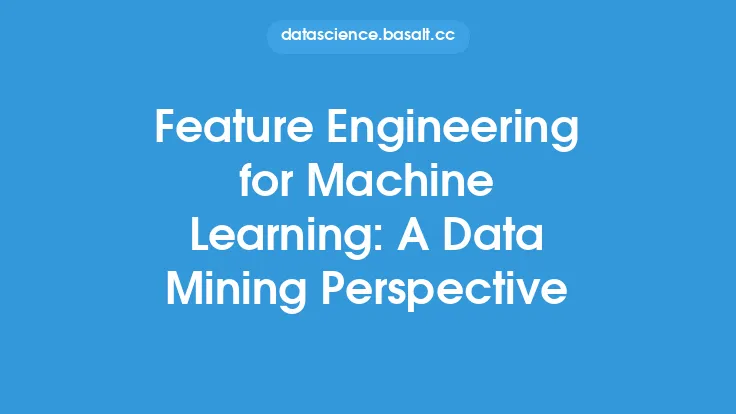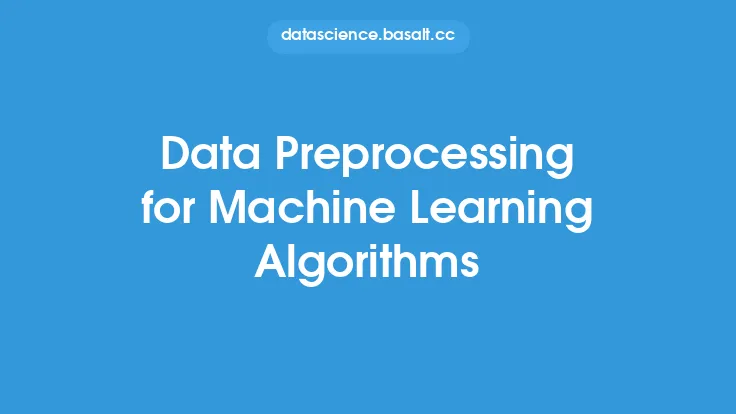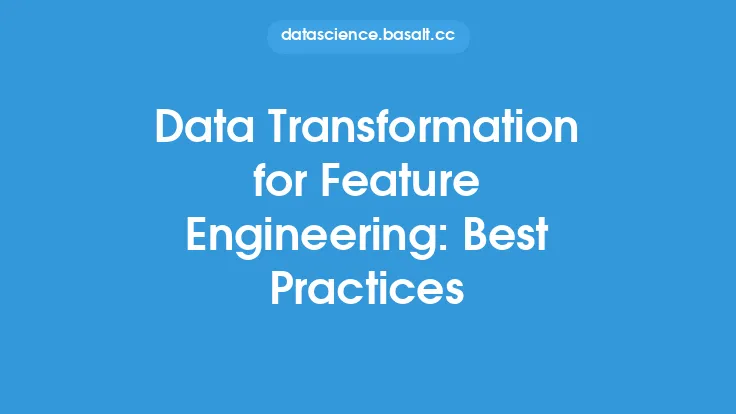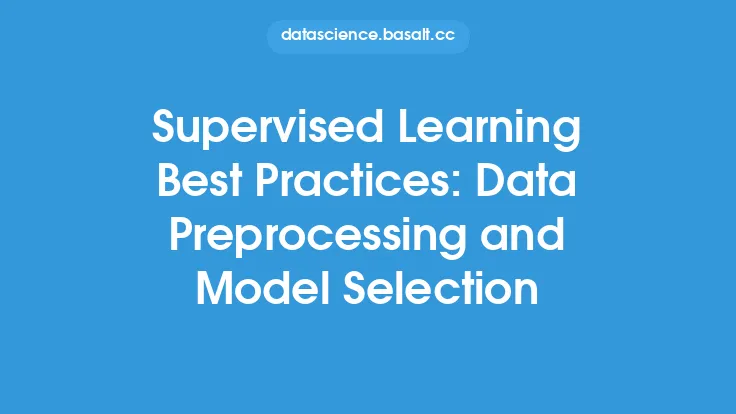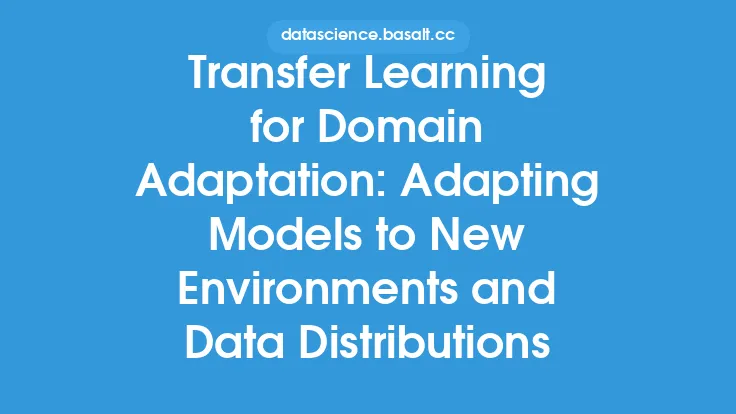Unsupervised learning is a crucial aspect of machine learning that involves training models on unlabeled data to discover hidden patterns, relationships, and structures. One of the key applications of unsupervised learning is in data preprocessing and feature engineering, which are essential steps in preparing data for supervised learning models. In this article, we will delve into the world of unsupervised learning for data preprocessing and feature engineering, exploring the various techniques and methods used to improve the quality and relevance of data.
Introduction to Data Preprocessing
Data preprocessing is a critical step in the machine learning pipeline that involves cleaning, transforming, and preparing data for modeling. The goal of data preprocessing is to ensure that the data is in a suitable format for modeling, which can improve the accuracy and performance of machine learning models. Unsupervised learning plays a vital role in data preprocessing, as it can help identify and correct errors, handle missing values, and transform data into a more suitable format. Some common techniques used in data preprocessing include data normalization, feature scaling, and encoding categorical variables.
Feature Engineering
Feature engineering is the process of selecting and transforming raw data into features that are more suitable for modeling. The goal of feature engineering is to create a set of features that are relevant, informative, and useful for machine learning models. Unsupervised learning can be used to identify the most relevant features, reduce dimensionality, and create new features that capture important patterns and relationships in the data. Some common techniques used in feature engineering include feature extraction, feature selection, and feature construction. Feature extraction involves reducing the dimensionality of the data by selecting a subset of the most relevant features, while feature selection involves identifying the most informative features and eliminating redundant or irrelevant ones.
Unsupervised Learning Techniques for Data Preprocessing
Several unsupervised learning techniques can be used for data preprocessing, including clustering, dimensionality reduction, and anomaly detection. Clustering involves grouping similar data points into clusters, which can help identify patterns and relationships in the data. Dimensionality reduction involves reducing the number of features in the data, which can help eliminate noise and improve model performance. Anomaly detection involves identifying data points that are significantly different from the rest of the data, which can help detect errors and outliers.
Autoencoders for Feature Learning
Autoencoders are a type of neural network that can be used for feature learning and dimensionality reduction. An autoencoder consists of an encoder and a decoder, where the encoder maps the input data to a lower-dimensional representation, and the decoder maps the lower-dimensional representation back to the original input data. Autoencoders can be used to learn compact and informative features that capture important patterns and relationships in the data. By training an autoencoder on a dataset, we can learn a set of features that are useful for modeling and improve the performance of machine learning models.
t-SNE for Visualization
t-SNE (t-distributed Stochastic Neighbor Embedding) is a technique used for visualizing high-dimensional data in a lower-dimensional space. t-SNE works by mapping the high-dimensional data to a lower-dimensional space, such that similar data points are mapped to nearby points in the lower-dimensional space. t-SNE can be used to visualize the structure and relationships in the data, which can help identify patterns and clusters. By applying t-SNE to a dataset, we can gain insights into the underlying structure of the data and identify features that are relevant for modeling.
Independent Component Analysis (ICA)
Independent Component Analysis (ICA) is a technique used for separating mixed signals into their original sources. ICA works by assuming that the mixed signals are linear combinations of independent sources, and it tries to unmix the signals to recover the original sources. ICA can be used for feature extraction and dimensionality reduction, as it can help identify the underlying sources of variation in the data. By applying ICA to a dataset, we can identify features that are independent and informative, which can improve the performance of machine learning models.
Conclusion
Unsupervised learning is a powerful tool for data preprocessing and feature engineering, as it can help identify patterns and relationships in the data, improve the quality and relevance of data, and create informative features that capture important structures and relationships. By applying unsupervised learning techniques such as clustering, dimensionality reduction, and anomaly detection, we can improve the performance of machine learning models and gain insights into the underlying structure of the data. Autoencoders, t-SNE, and ICA are just a few examples of the many techniques that can be used for feature learning and dimensionality reduction, and they have been widely used in many applications, including image and speech recognition, natural language processing, and recommender systems. As machine learning continues to evolve, unsupervised learning will play an increasingly important role in data preprocessing and feature engineering, enabling us to extract more insights and value from complex and high-dimensional data.
